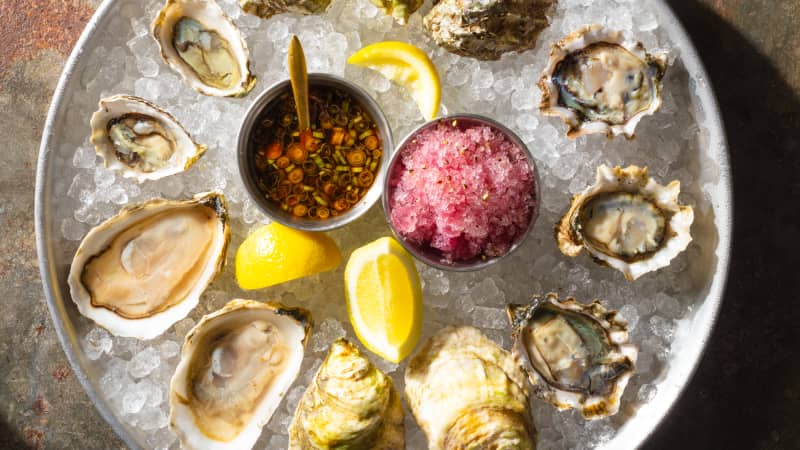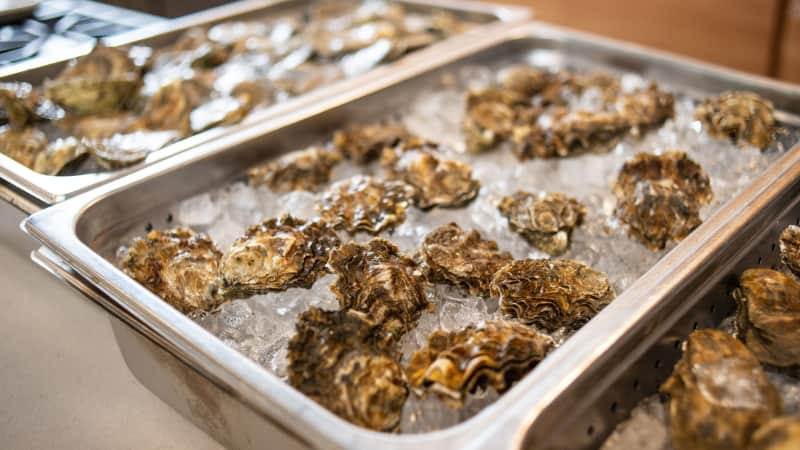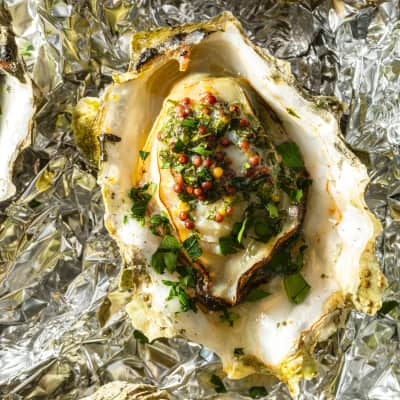Everyone remembers their first oyster. I had mine back in 2004, when I was working as a garde-manger at UpStairs on the Square, the iconic azalea-pink dining room that for decades graced the top three floors of a Harvard Square brownstone. When I admitted to my sous chef that I’d never tried a raw oyster, he plucked one from my station, shucked it, and offered it to me. I was unprepared to be transported to the cold, blue waters of Wellfleet, Massachusetts, as the liquor that I tipped from that gently gnarled gray-and-green shell flooded my palate with salt. But as I chewed, that brininess was tempered by the umami-rich, creamy flavors packed in the oyster’s plump body. It was, as oyster expert Rowan Jacobsen, author of the award-winning book A Geography of Oysters: The Connoisseur’s Guide to Oyster Eating in North America (2007), recently described to me, “a little bit of the sea come to life.”
I was immediately won over, and I have downed at least 1,000 oysters since then—not only in bars and restaurants but also at home with friends, which has become one of my favorite ways to entertain. Plattering up a dozen or two on the half shell is simpler than you might think and makes an impressive starting point for any gathering.













